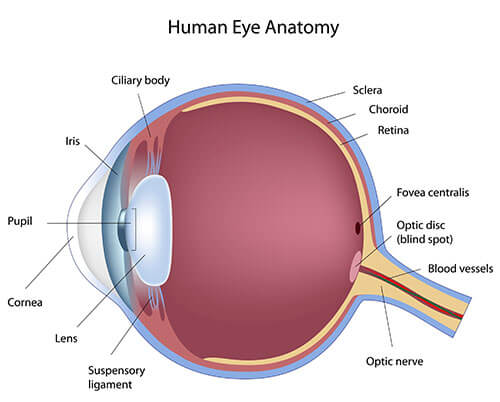
Before any eye surgery such as custom LASIK vision correction is considered, basic education about the eye tends to be helpful for our patients. Here is a quick primer on your eyes and how they work.

Before any eye surgery such as custom LASIK vision correction is considered, basic education about the eye tends to be helpful for our patients. Here is a quick primer on your eyes and how they work.
All vision is based on light. In order for you to see correctly, light must pass through various parts of your eye for your brain to interpret what you are seeing and produce an image of the object you are looking at.
To see clearly, the cornea (the front of your eye) must be perfectly round. When light passes into the cornea, it passes through the iris, the pupil, and finally, the crystalline lens, located inside of the eye.
Depending on the amount of light, the pupil and the iris muscles adjust to allow the proper amount of light in. After passing through the iris and the pupil, the crystalline lens focuses the light onto the retina.
The retina senses different types of light and allows the optic nerve to send the information to the brain.

For proper eyesight, the cornea (the clear window in front of the eye) and the lens (behind the pupil) must properly focus or”refract” light onto the retina (at the back of the eye).
If the length or shape of the eye is not ideal, the light may get focused too early (in front of the retina) or too late (behind the retina) leaving a blurred image on the eye is a very complex organ that must work precisely in order to produce correct vision.
When there are problems with the shape of the cornea, the focusing ability of the crystalline lens, or with the retina, your vision can become jeopardized. Myopia (near-sightedness), hyperopia (far-sightedness), and astigmatism (distorted vision) are what are known as refractive errors.
These types of errors can be corrected with corrective lenses such as contact lenses or glasses and can often be permanently corrected with LASIK.
Clear Advantage Vision Correction
155 Borthwick Avenue,
Suite 200 E.
Portsmouth, NH 03801